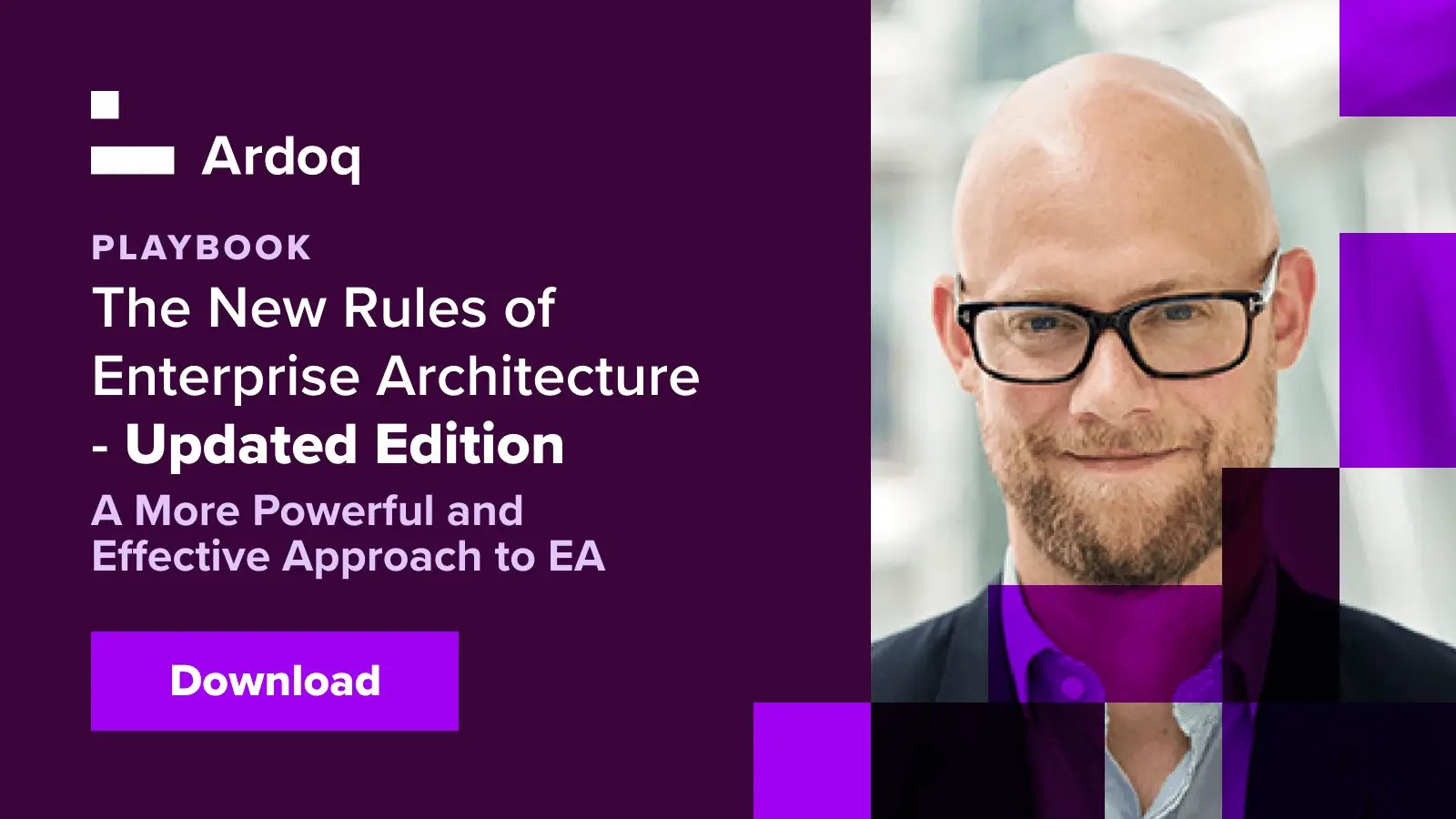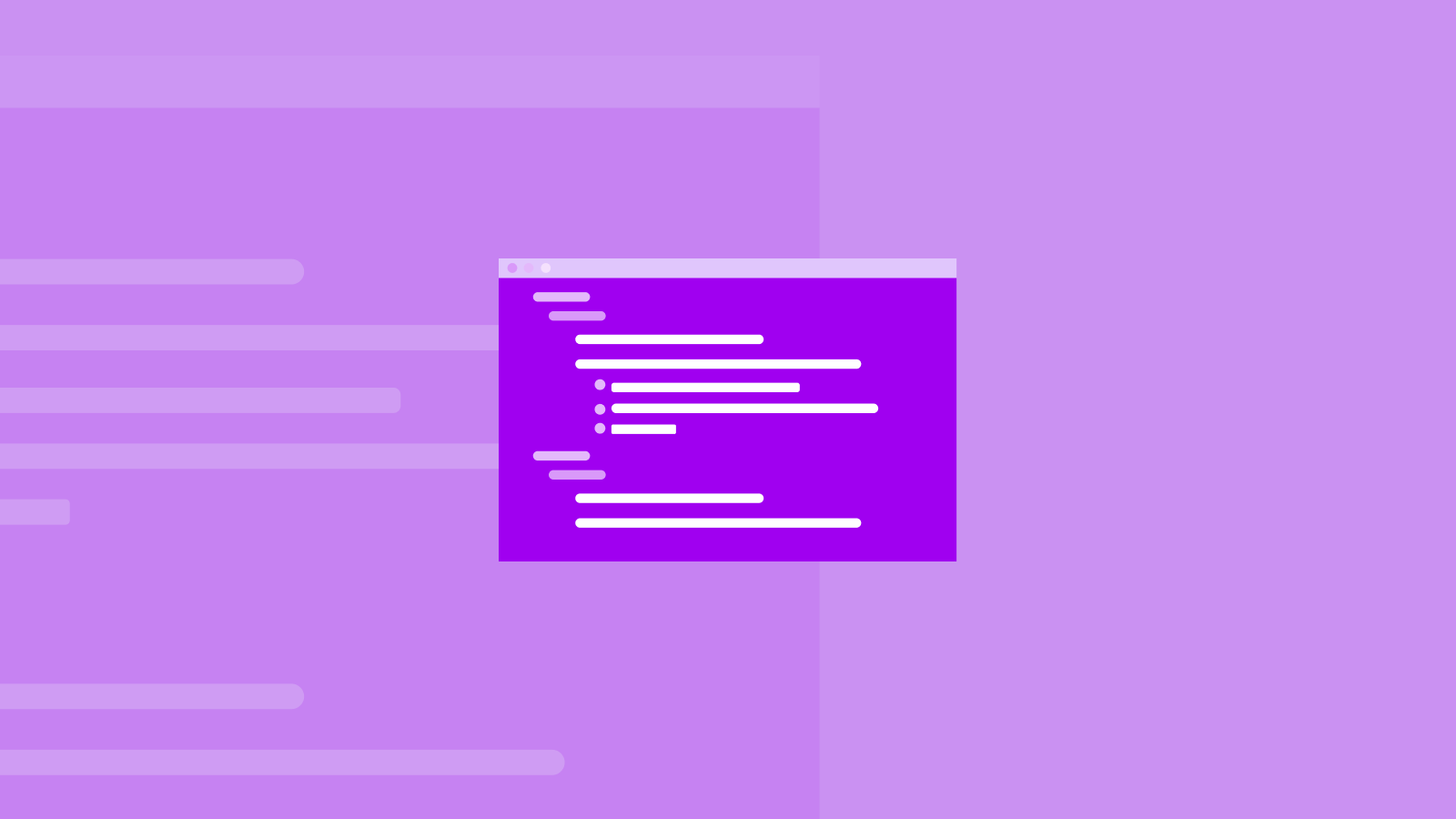What Is ArchiMate and What Is It Used for?
ArchiMate is an open and independent modeling language for Enterprise Architecture (EA), developed by The Open Group. It provides a standardized and clear way to visualize, describe, and analyze the architecture of complex systems within an organization, aligning IT initiatives with business objectives to ultimately drive better organizational outcomes.
Jump to:
Why Is It Important to Use a Modeling Language?
Using a modeling language for Enterprise Architecture can contribute to improving business outcomes. These include:
-
Standardization and consistency through a standardized set of concepts and notations.
-
Improved communication with common or tailored visual diagrams for each stakeholder.
-
Comprehensive analysis showing interdependencies and gap analysis between different components.
-
Improved planning and decision-making through road mapping and scenario planning.
-
Enhanced Enterprise Architecture governance and regulatory compliance and policy enforcement.
-
Efficiency and cost savings via resource optimization.
-
Risk management through risk identification and effective change management.
-
Documentation and knowledge management.
-
Support for agile and digital transformation.
For expert guidance on a modern, outcomes-driven approach to Enterprise Architecture, read our guide: The New Rules of Enterprise Architecture 
How Does ArchiMate Work?
The concept of ArchiMate is to divide an Enterprise Architecture into several layers, each representing different aspects of the organization. Layers can be further defined using Extensions to address specific business concerns.
Elements are the building blocks of ArchiMate and represent entities within each layer. Finally, relationships capture connections between Elements to highlight how different parts of the architecture are connected and interact.
Layers
ArchiMate defines three layers as standard:
-
Business Layer which focuses on the business processes, roles, goals, and organizational structures.
-
Application Layer that deals with applications and their interactions.
-
Technology Layer which encompasses the hardware, networks, and middleware supporting the applications.
Extensions
Additional modeling capabilities can be added to the core layers through the use of the following Extensions:
-
Motivation Extension which captures the intent behind architecture, including goals, principles, and requirements.
-
Implementation and Migration Extension that supports planning, transition, and migration activities.
-
Strategy Layer Extension which deals with high-level strategic elements like business capabilities, resources, courses of action and value streams.
Elements
Elements can be categorized into:
-
Active Structure Elements which are resources that can exhibit behavior and perform activities.
-
Behavior Elements are units of activity performed by active structure elements.
-
Passive Structure Elements describe Objects on which behavior is performed.
Relationships
Relationships capture the connections between elements and include:
-
Structural Relationships that show the architectural structure (e.g. composition, aggregation, and so on).
-
Dependency Relationships that show dependencies.
-
Dynamic Relationships that highlight temporal or causal connections.
-
Other Relationships such as associations or specialization.
Further functionality defined within ArchiMate are Aspects and Viewpoints.
Aspects
Aspects provide different views or perspectives on the architecture components within the various layers. They help in structuring the architecture and focusing on specific concerns.
Viewpoints
Viewpoints provide specific, tailored perspectives that address the diverse concerns of various stakeholders. Architects can create structured, relevant, and comprehensible models that facilitate better communication, analysis, and decision-making by selecting and using the appropriate viewpoints.
Top 4 Strengths and Disadvantages of ArchiMate
ArchiMate has several strengths and weaknesses and understanding these can help in determining when and how to best utilize it.
Strengths include:
-
An international, vendor-independent, standard modeling language.
-
Standardized, comprehensive, and versatile modeling
-
Excellent visualization and stakeholder communication
-
Strong analysis capabilities and tool support.
Disadvantages include:
-
Steep learning curve and potential complexity
-
High-level abstraction may miss technical details
-
Limited customization and rigid framework
-
Dependency on specialized tools.
ArchiMate Examples
Use Cases of ArchiMate in Different Industries
A wide range of organizations use ArchiMate globally. Its adoption is particularly strong among enterprises that prioritize structured enterprise architecture practices.
Typical market sectors where ArchiMate is used include:
-
Financial Services, such as banks, insurance companies, and other financial institutions that usually use ArchiMate to map their complex IT landscapes and ensure regulatory compliance
-
Government, both national and local, leverage ArchiMate for strategic planning and the optimization of public services
-
Telecommunications use ArchiMate to manage their extensive and intricate network architectures
-
IT and Consulting Services use ArchiMate as a standard part of their Enterprise Architecture toolkit, often advising other businesses on EA practices.

ArchiMate and TOGAF
Both ArchiMate and TOGAF (The Open Group Architecture Framework) are developed by The Open Group but serve different purposes with EA. Understanding their differences, as well as their relative strengths and weaknesses, can help organizations choose the right tools and frameworks for their business needs.
ArchiMate complements frameworks like TOGAF by providing detailed models.
ArchiMate vs TOGAF: Strengths
The key strengths of ArchiMate include providing standardized and clear visualizations of EA, supporting a wide range of stakeholders with multiple viewpoints, and integrating with frameworks like TOGAF by adding detailed modeling capabilities.
The strengths of TOGAF are that it offers an Enterprise Architecture framework with a detailed methodology (Architecture Development Method). It offers flexibility and adaptability to different organizational needs, and it is a widely recognized and supported framework with a global certification program.
ArchiMate vs TOGAF: Weaknesses
Although both ArchiMate and TOGAF are powerful tools for EAs they do have a number of potential weaknesses.
ArchiMate models can be complex and time-consuming to create and understand. They may not cover every low-level technical detail and so can require supplementary methods or tools.
TOGAF can also be complex and challenging to implement fully, requiring significant resources and time. It can also be perceived as being too abstract, and can require additional tools for detailed technical implementation.
Complementary Use
While TOGAF and ArchiMate have distinct roles and strengths, they can be highly complementary when used together. TOGAF provides the overarching framework and methodology for EA, while ArchiMate delivers the detailed visualizations and modeling capabilities required to implement the architecture effectively.
Using both can leverage the strengths of each, mitigating their individual weaknesses.
7 Best Practices For Effective ArchiMate Modeling With Ardoq
Adopting best practices for effective ArchiMate modeling with Ardoq can significantly enhance your Enterprise Architecture efforts. Here are some of the best practices to consider:
-
Understand your business requirements with clear stakeholder identification and clear objectives.
-
Define a modeling structure using ArchiMate’s Layered approach with clear and consistent naming conventions. Use Ardoq’s “out of the box” templates for ArchiMate to build layers in their own workspaces with their own permissions and, then define their relationships with artifacts in other layers and workspaces.
-
Leverage Ardoq’s dynamic data-driven visualizations and automated integrations to quickly get the information and insights you need.
-
Implement collaborative modeling using Ardoq’s real-time collaborative features and implement version control.
-
Choose a flexible metamodel to nest components as needed and grow your metamodel in parallel with organizational changes. This allows you to outline the business' high-level capability categories.
-
Quickly perform impact analysis and reporting by leveraging Ardoq’s graph-powered analytics and automated reporting capabilities.
-
Ensure continuous improvement by establishing a feedback loop and implement iterative refinement of your models to adapt them to evolving business needs and technology landscapes.
Document Architecture Using ArchiMate With Ardoq
By following these best practices, EA teams can leverage Ardoq’s powerful capabilities to create effective, accurate, and understandable ArchiMate models.
These practices not only enhance the quality and clarity of models but also ensure they align closely with organizational goals and stakeholder needs, ultimately driving better business and IT alignment, aiding more informed decision-making.
FAQs About ArchiMate
What Is ArchiMate?
ArchiMate is an open-standard EA modeling language designed to describe, analyze, and visualize relationships among business domains in a coherent and unambiguous way.
What Are the Key Concepts in ArchiMate?
ArchiMate has developed the concepts of Layers, Elements, Relationships, Aspects and Viewpoints to provide a structure and simplify complex architectures for comprehensive understanding and communication.
How Does ArchiMate Integrate With Other Frameworks?
ArchiMate integrates with frameworks by providing a standardized visual modeling language that captures and represents architectural artifacts and processes. This enhances consistency, communication, and analysis, aligning IT and business strategies, and supporting comprehensive documentation and governance within these frameworks.
What Tools Support ArchiMate modeling?
ArchiMate integrates with frameworks like TOGAF, IT4IT, Zachman, BPMN, CMMI, COBIT, ITIL, and PRINCE2. This integration provides a cohesive approach to Enterprise Architecture by enabling consistent and comprehensive modeling, which enhances communication, governance, and strategic alignment across the organization.
Does an Enterprise Architect Need ArchiMate?
An Enterprise Architect can benefit from using ArchiMate. It provides a standardized, comprehensive modeling language that enhances clarity and consistency in documenting, analyzing, and communicating complex architectures.
Combined with an EA tool such as Ardoq it helps in strategic alignment, effective decision-making, and better stakeholder communication, all crucial for successful Enterprise Architecture practices and driving business outcomes.
However, Archimate is not strictly necessary for the modern Enterprise Architect to drive effective digital transformation initiatives.








/Logos/Ardoq/RGB_Ardoq_Logo_Stacked_White_Monochrome%201.png?width=80&height=77&name=RGB_Ardoq_Logo_Stacked_White_Monochrome%201.png)

